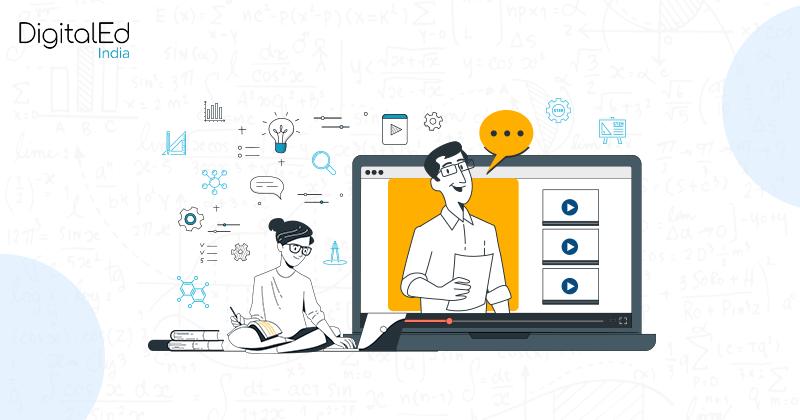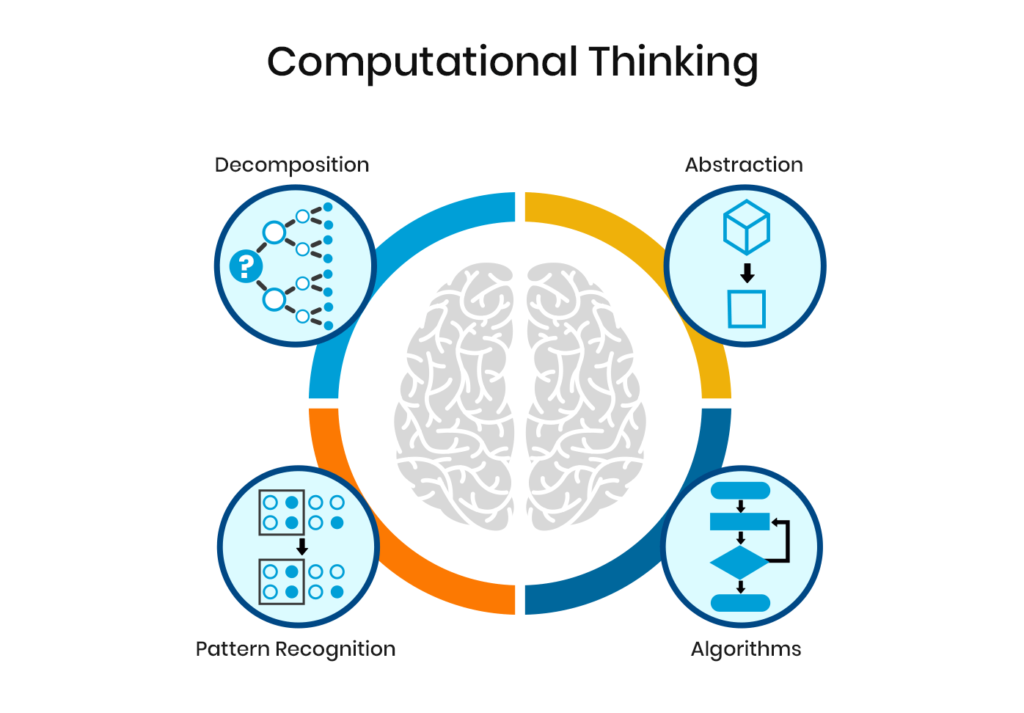7 Dimensions of Successful STEM Education
Our daily lives have been drastically altered by disruptive technological advancements, which are constantly enhancing the way we work and live. One piece of evidence is the crucial role that technology today plays in STEM (Science, Technology, Engineering, and Math) education.
With the paradigm shift towards digitalization, institutions should introduce and incorporate digital tools into their STEM courses to deliver engaging and immersive STEM learning experiences.
Integration of technology brings forth some powerful strategies and techniques to effectively achieve desired learning outcomes.

Let’s discuss the 7 dimensions of successful STEM education.
- Dynamic Representations:
With the integration of technology, STEM students can be engaged and immersed more effectively in complex concepts with digital simulations and representations of engineering, scientific, and mathematical systems.
Digital representations, using intuitive dashboards on a computer model, can assist STEM students to build more accurate and memorable mental notes of intangible concepts that would otherwise be impossible to observe. The degree of control and interactivity of the dynamic representations can vary widely, and the success of such STEM courses depends on the different pedagogical strategies applied to them.
For example, interactive videos can be used to eradicate misconceptions and explain concepts like the space-time continuum in Physics, complex Mathematical formulae, how different molecules react with each other in Chemistry, etc.
- Effective Collaboration:
Collaborative reasoning can keep STEM students invested through continuing efforts to create and preserve a shared understanding of a complex concept. Students debate different meanings and interpretations when they collaborate to think critically about different theories and scientific phenomena.
According to research, students gain more from group projects when they are given help and direction for connecting with one another. “When working interactively with others, students learn to inquire, share ideas, clarify differences, problem-solve, and construct new understandings.” – Eva Hammar Chiriac, Linkoping University (frontiersin.org)
With the advancements in technology, STEM educators can enhance collaboration among students to facilitate meaningful conversations that resolve doubts, promote knowledge retention, and increase access to community knowledge. Digital platforms can be effectively used for brainstorming innovations, projects, theories, etc. through audio/video calls or chatrooms.
- Prompt and Personalized Feedback:
One of the most effective strategies for enhancing student learning is feedback.
Feedback, when combined with challenging goals, informs STEM students about the degree of performance that is expected, allowing them to set appropriate goals and guide their actions in the right direction.
Students can narrow the gap between their current level of performance and the desired goal by clearing learning objectives through immediate feedback. And personalized feedback can help educators understand each student’s progress and ultimately eliminate knowledge breakdowns in complex STEM curriculums.
With the help of digital tools, STEM students can stay connected with educators throughout the learning process and receive immediate, individualized feedback while practicing or mastering STEM courses or skills.
- STEM Argumentation:
To present and argue evidence that supports a claim regarding a scientific occurrence, one must use the cognitive process known as science argumentation, which calls for critical thinking.
All branches of science practice argumentation in some form or another. Science argumentation in STEM learning gives students the tools they need to build knowledge in the classroom and to challenge concepts that seem reasonable but don’t have sufficient evidence to back them up.
This dimension prepares students for a career in STEM as scientists use different methods to direct their research efforts like a scientific argument or peer review. In order to ultimately improve scientific explanations and experimental designs, scientists point out flaws and limitations in other people’s arguments.
There are many ways that technology can support scientific argumentation, allowing STEM students to assess evidence in support of scientific or mathematical ideas. For example, a digital platform can offer a vast repository of theories and hypotheses for the students to examine.
- Engineering Design Methodologies:
The main objective of engineering is creating and executing innovative designs for real-world problems. Similar to science, engineering uses both systematic and iterative methods.
Engineers evaluate and alter each new iteration of a design in light of the knowledge at their disposal before taking deliberate measures to enhance the design. Engineers use data to comprehend the design problem, establish requirements for the desired solution, and pinpoint restrictions.
The use of digital tools is essential to engineering design. Technology tools in education give students more chances to incorporate mathematical and scientific principles into their works. For instance, an intuitive platform can be used to mimic a whiteboard in a computer-based model to execute complex calculations and test engineering designs.
- Computational Thinking:
Using computational thinking, STEM students can break down complex problems into their component parts and come up with potential answers. Then, they can communicate these solutions in a way that a machine, a person, or both, can comprehend.
There are four pillars of computational thinking:

- Decomposition – Fragmenting a complex issue or system into smaller, easier-to-manage components.
- Pattern identification – Identifying commonalities between and across problems.
- Abstraction – Concentrating only on crucial details while disregarding unimportant ones.
- Algorithms – Strategizing a step-by-step solution to the issue or the guidelines to be used in doing so.
In STEM learning, computational thinking techniques can be used in a wide range of scientific and mathematical concepts, offering an applied approach to make sense of hypothetical datasets.
- Embedded Evaluation:
Digital assessments can offer extensive information about the type and caliber of students’ STEM practices during scientific inquiry when they are integrated into the STEM curriculum. When used for formative purposes, assessments offer a priceless chance to modify education to better suit the needs of students.
Evaluation incorporated into STEM courses can encourage students to reflect on the caliber of their arguments, models, or problem-solving approaches. These types of assessments allow students to receive both peer and expert feedback on their knowledge outcomes, which students then used to revise and resubmit their assignments or theses.
This dimension of successful STEM learning can also be facilitated through a digital platform where educators can add various types of questions in-between lessons to test the progress of individual learners.
These were the 7 dimensions that can facilitate successful STEM learning with the help of technology, now let’s discuss how to implement these strategies.
Implementing New Dimensions with the Interactive Möbius Platform
The Möbius e-learning platform is a powerful tool for creating and distributing online STEM courses. Lessons on Möbius aren’t supplied as PDFs like they are on other e-learning systems, it encourages a cutting-edge blended learning strategy, enabling educators to participate more actively in learning that takes place “outside the classroom.”
The Möbius unlocks the true potential of students by facilitating the aforementioned dimensions of STEM education:
• Universities and other institutions can create extensive content repositories specifically for STEM subjects, enabling easy access to community knowledge;
• Educators can enter or represent the dynamic structures of STEM-based courses, like matrix expressions, differential equations, chemical equations, etc.
• Educators can add multimedia content in STEM lessons for increased knowledge retention;
• Educators can choose from a variety of question types (integration, matrix entries, complex equations, etc.) to embed in-between lessons, allowing them to stay connected with the students throughout the learning experience;
• Educators can divide cumbersome tasks into sub-tasks to make the teaching process more seamless and manageable;
• Students can communicate and ask for educators’ instant feedback to reinforce their knowledge by correcting mistakes and debunking misconceptions. Educators get a better understanding of their student’s progress and knowledge gaps;
• Students can leverage automated randomized questions to practice repeatedly, enabling effective self-evaluation.
And more.
If you wish to learn more about the Möbius experience, you can book a demo session with one of our product experts.